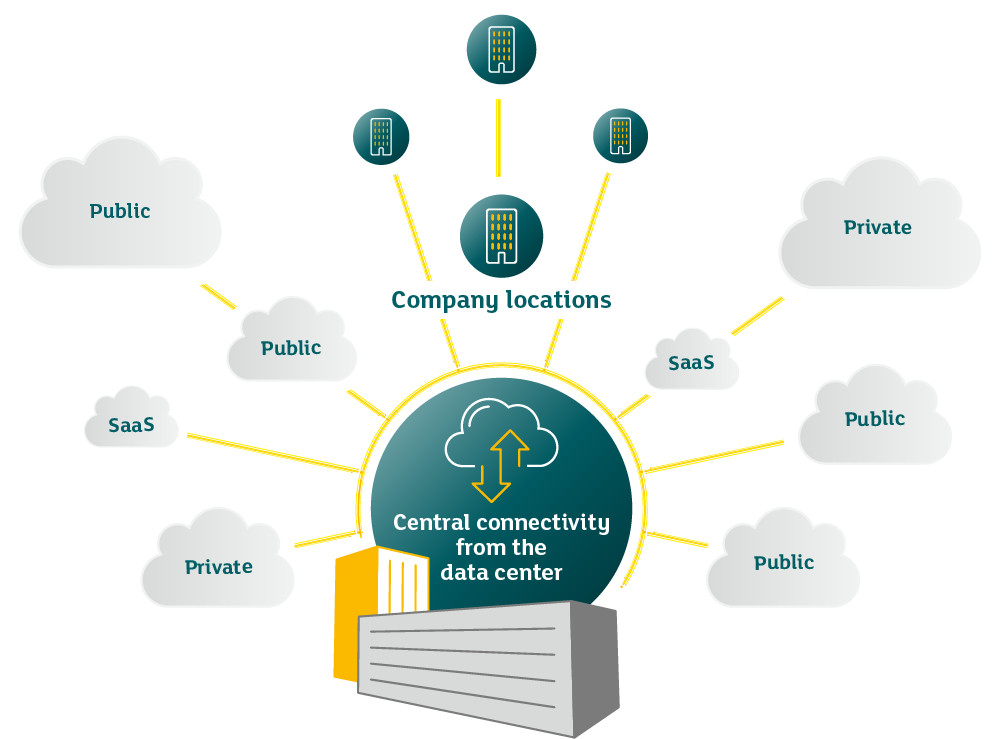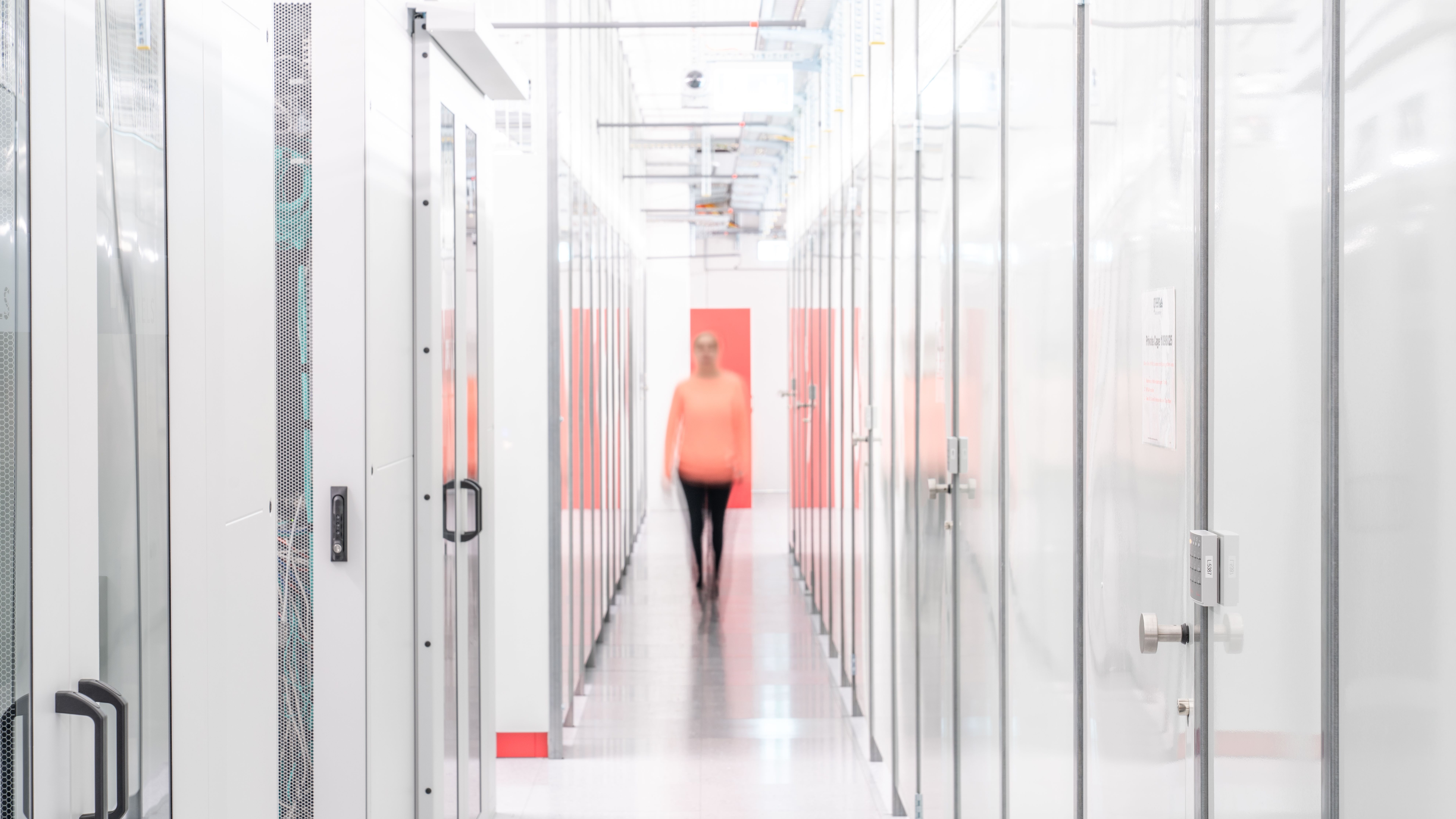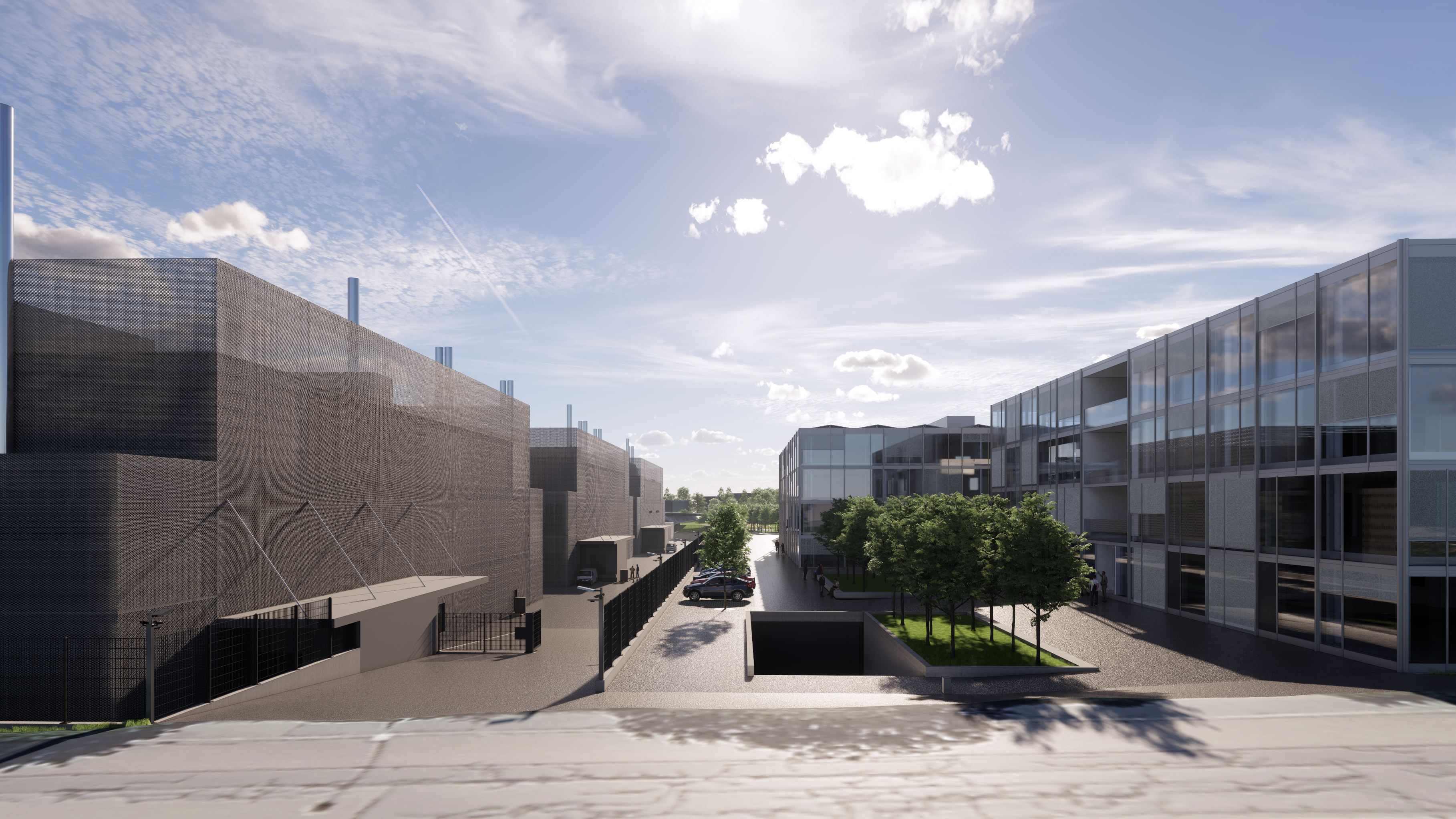
Multi-cloud connectivity: The key to success
Corporate IT is in a state of flux. Whereas IT infrastructure used to be operated centrally at the company's headquarters, it is increasingly being externalized. According to recent surveys, three-quarters of all Swiss companies are planning to implement multi-cloud concepts with multiple providers by 2025, and around half of the companies will be hosting in external data centers by five years. In order to achieve scalability, cost efficiency, security and a high level of automation, it is also worth rethinking the network architecture.

What should multi-cloud connectivity do?
Hybrid architectures that integrate decentralized resources from a wide range of providers require a network architecture that is consistent, scalable, and centrally managed. In addition to availability, latency and security, cost efficiency and cross-cloud compliance in terms of data protection and security policies must also be considered. A wide variety of applications - some mission-critical, some fluctuating in workload, others more deeply prioritized - determine the architecture. Connectivity must therefore be application- and future-oriented.
Easily integrate cloud locations
A common way to tap into public clouds is to use IPsec or VPN tunnels. Such point-to-point connections are easy to set up and are suitable for many applications. In the case of SD-WAN (Software-Defined Networking), for example, network parameters can be controlled centrally via the software layer, which is a significant advantage over traditional methods. Another advantage of SD-WAN is that it can respond flexibly to new requirements. New connections are provided very quickly, provided the connection is physically available.
Network architecture is becoming a critical factor for scalability, cost efficiency, security and automation as cloud adoption continues. |
How are multi-cloud connections more directly and efficiently connected?
Another option is a direct, dedicated connection to the public cloud provider. Examples of this are AWS Direct Connect or Azure ExpressRoute. Due to the immediate proximity to the public cloud providers, this solution can be ideal with the lowest latency - especially if large parts of the company's IT are also hosted in the same data centers. The actual data hub is thus moved to a highly networked data center that offers a variety of connectivity options.
These options also include connection via virtual cloud routers - one of the application forms that, already preconfigured offers the widest range of connections. An on-demand portal ensures access to all leading public cloud providers around the globe as well as over 700 data center locations worldwide.
Network architecture is becoming a critical factor for scalability, cost efficiency, security and automation in the course of cloud adoption. Therefore, companies should now consider how to redesign it. Providers offer support with a broad and carrier-neutral solution portfolio that provides local and global connections to all clouds, locations and Internet exchanges and also takes their orchestration into account.
We're happy to help you with all questions related to Multi Cloud Connectivity. |
Interview with Reto Grunder, Productmanager for Connectivity at Green
Where do you see the greatest challenges for companies in terms of connectivity?
Reto Grunder: New technologies, rapid data growth, new needs and requirements dictate the IT strategy of the future. From the on-prem model to migration to the cloud: the journey is shaping up to be flexible and everything is in flux. Key questions such as: Where are IT systems and applications operated, which tasks are outsourced and how is seamless operation ensured, are some of the topics that play an important role in the course of automation and the use of AI. The networking of locations, cloud proximity, security and speed are subsequently challenges that must be solved via efficient connectivity.
In what way?
With the increasing shift to external data centers and the cloud, it is advisable to realign the hub of connectivity and also build it in the external data centers. This is because data traffic is increasingly shifting there. With connectivity from our data centers, our customers benefit from faster connections, more productivity and greater security.

Which solution do you recommend?
Just as there is no one cloud that fits everything, the same applies to connectivity. It depends on the needs and the applications. But what can be said for sure is this: Virtual cloud routers are a very efficient way to orchestrate, automate and monitor many connections. In addition to optimized connections, this also results in cost advantages.
What specifically does Green offer in this area?
We offer our customers access to the large clouds, data centers and locations around the globe. We do this with the flexibility and at the right speed that companies need today. In doing so, we draw on all technologies and on an established partner network. We cover virtual routing functions needed to connect cloud services and regions, as well as network function virtualization (NFV) services. In addition, all our sites are of course geo-redundant and we are a core site of SwissIX.
What role does SwissIX play for companies?
SwissIX is the largest Swiss Internet exchange node that allows private data exchange within Switzerland. This is interesting, for example, for large volumes of data exchanged between the seven core sites in Switzerland, including Green. This can certainly be very useful as a supplement.
What should companies look for when choosing their connectivity partner?
In addition to the technical support and the offer tailored to the needs, I think it is important that the connectivity partner is always evolving and can react quickly to new requirements. This means that he can offer agility and professionalism within the organization, which customers can use to their advantage.
How do companies achieve a high level of resilience in the area of connectivity?
Various factors come into play here. On the one hand, how the connections are technically implemented - for example, redundancies, technologies, avoidance of single points of failure - but then also the contractually guaranteed SLAs, the provider's overarching business continuity management system and solutions for protection against cyberattacks. Green has a business continuity management system and certifications that address the issue of resilience in detail and in multiple layers to guarantee just that level of reliability. We work closely with our customers to understand their needs in order to have the right solutions implemented in case of emergency.
We're happy to help you with all questions related to Multi Cloud Connectivity. |
More about Connectivity and Data Centers
Journey to cloud
Smart, hybrid and tailored to your needs, we support you on your journey to the cloud.

Data center outsourcing
Anyone who replaces their own server rooms and relies on sustainable data centers is investing in the future.

Best-in-Class Datacenter
Sustainable from the architecture to the cooling concept to the use of waste heat. This is our new Metro Campus Zurich.
